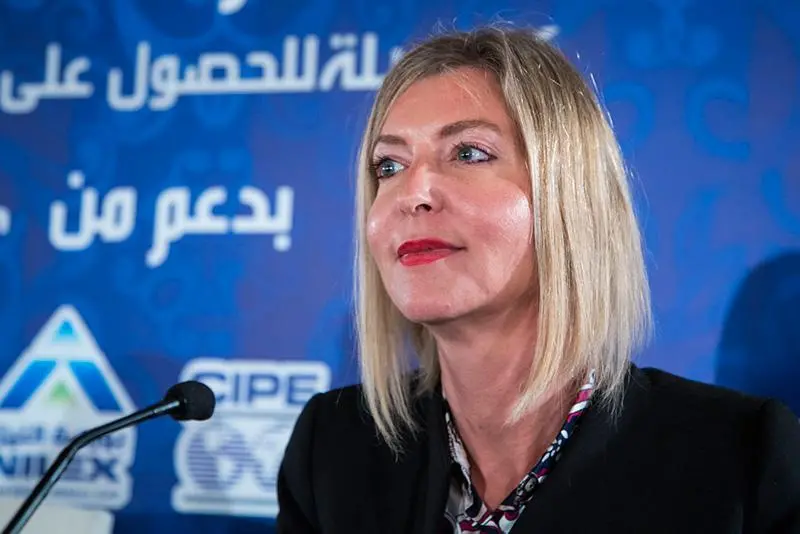PHOTO
Egypt’s education and healthcare sectors are deemed the most promising sectors for investment given evolving market dynamics and changes in public policies, according to Nada Shousha, Vice-Chair of the Egyptian-American Enterprise Fund.
The Egyptian-American Enterprise Fund (EAEF) was created by the US congress in 2011 following the uprising that forced long-time autocrat Mohamed Hosni Mubarak to step down. As a developmental institution, the fund was aimed at helping to rebuild the country’s private sector during highly turbulent times when FDIs and tourism revenues had declined. The EAEF was modelled after funds created in the early 1990s to build market-based economies in the former Soviet Union. So far, the fund has invested over $200 million in Egypt.
“Egypt really has all the ingredients to be a good recipient for foreign investments,” said Shousha. “It has so much potential because of its strategic location. It has a very large young population and a good internal market. It also has a historically strong industrial base.”
According to Shousha, the fund is particularly interested in investing in the education and healthcare sectors, which have recently witnessed some robust consolidations.
“From a very fragmented market, with a school here and a school there, you are starting to see networks of schools with very good access to new technology,” said Shousha.
“And the focus is not only limited to Cairo but to other governorates too,” she added. “You have a lot of educational potential in Cairo, but you also have all the governorates that are hungry for investments in private education too.”
For decades, Egypt’s private schools have been owned and operated by families or individuals. However, in recent years, private education has attracted a handful of institutional vehicles bringing together large local corporations as well as banks.
According to the Canada-based investment management company Colliers International, Egypt’s private sector K-12 student growth has almost doubled in the last five years, at a CAGR rate of 6.3 percent, compared to 3.6 percent in the public sector. The number of enrolled K-12 students is expected to reach 34 million in 2030, creating a demand for an additional 11 million seats.
“There is a high potential in education K to 12, and also in higher education, to alleviate the burden of the government,” Shousha said.
Healthcare is another sector that Shousha believes is full of opportunities. “There is a big demand for access to quality and affordable healthcare. The demand is increasing now, with a higher number of Egyptians being insured as part of the government’s efforts to promote universal health coverage.”
In 2018, Egypt unveiled a national healthcare insurance plan that is expected to offer universal coverage for all Egyptians in the coming years. In order for this scheme to meet the healthcare demands of Egypt’s growing population, the outdated public healthcare infrastructure will need to be revamped and modernized through more public–private partnerships, which is expected to provide tremendous opportunities for investors, according to “The Report: Egypt 2020” from the Oxford Business Group.


Nada Shousha, Vice-Chair of the Egyptian-American Enterprise Fund (EAEF). Image courtesy EAEF
“The big strategy is that you need Cairo because it is a big market, but then you can roll out as much as you can in the governorates,” Shousha added.
The EAEF is already investing in Dawi Clinics and Smart Medical Services, a chain of primary care clinics that aims at providing comprehensive medical service to families. In September 2020, the fund also co-invested $6.7 million in Al-Tayseer Healthcare Group, which has emerged in recent years as the largest healthcare provider in the underserved and heavily populated Nile Delta region.
TECHS-STARTUPS AND SOCIAL DEVELOPMENT
“The third area that fascinates me is tech-startups,” said Shousha. “The tech savviness of young Egyptians is mind-blowing.” She added that technology has proven quite capable of enabling businesses to have a larger social impact, that it helps those at the bottom of the social pyramid more than those rather than the top.”
It serves the poor more than the rich,” she said. “For example, education depends very much on the curricula and the teacher, but with technology you can multiply that in order to have a larger base. You can hire one specialist that makes you a very good curricula with excellent exercises and then have that applied in all schools in your network through technology.”
So far, the fund has invested $223.9 million in Egyptian companies directly as well as in fund managers and private equities including Lorex, Tanmeya Capital Ventures, Algebra Ventures and Flat6 Lab, some of which are Egypt’s leading technology VC firms.
“The strategy forward is to support more fund managers and to really grow the ecosystem of private equity and fund management,” Shousha said.
However, the government still needs to promote a more encouraging and less risky business environment by reducing time-consuming bureaucratic procedures, said Shousha.
“When you invest, you want to have a good measure of risk. You do not like uncertainty,” she said. “It is very important to have a sense of when you can get your license and approvals.”
(Reporting by Noha El Hennawy; editing by Seban Scaria)
Disclaimer: This article is provided for informational purposes only. The content does not provide tax, legal or investment advice or opinion regarding the suitability, value or profitability of any particular security, portfolio or investment strategy. Read our full disclaimer policy here.
© ZAWYA 2021












